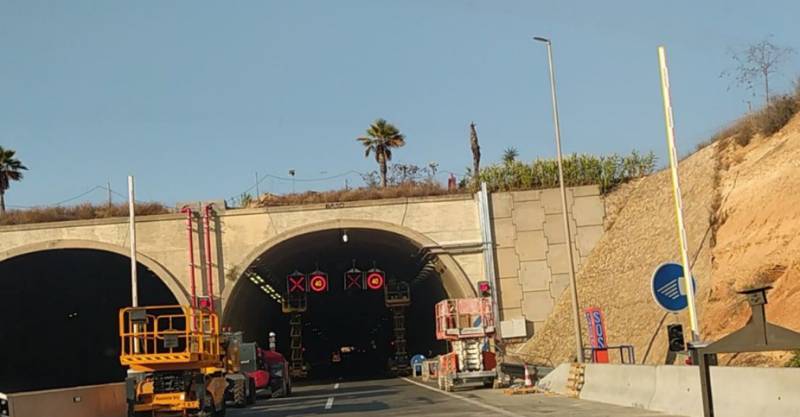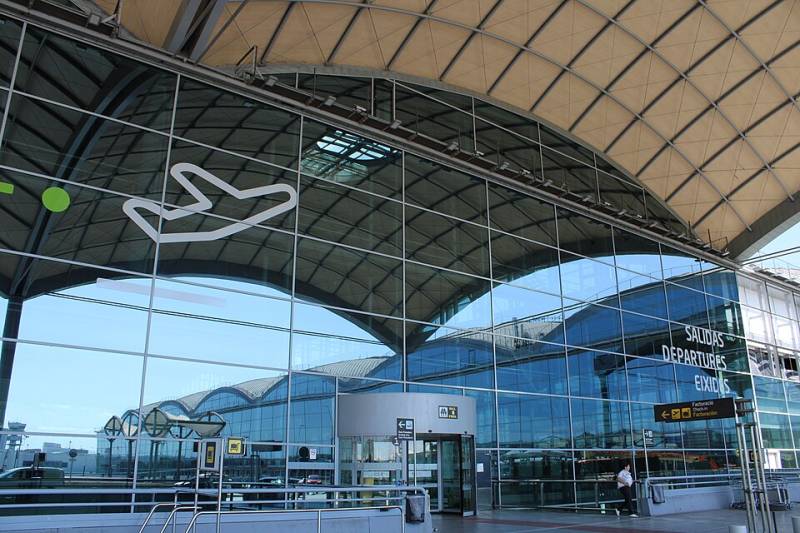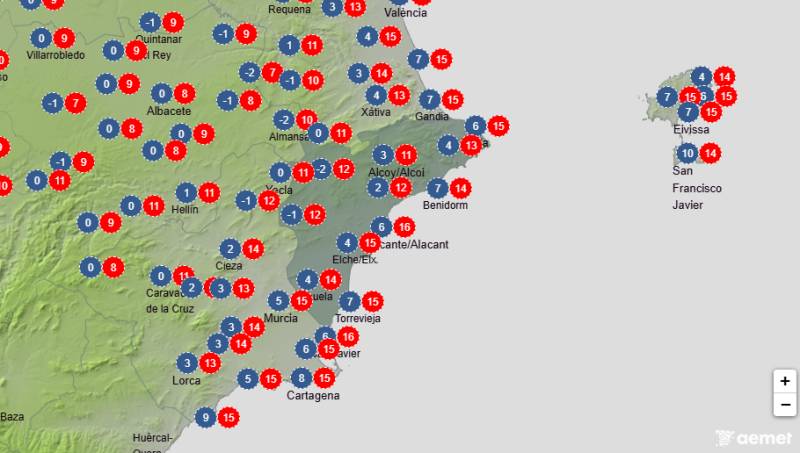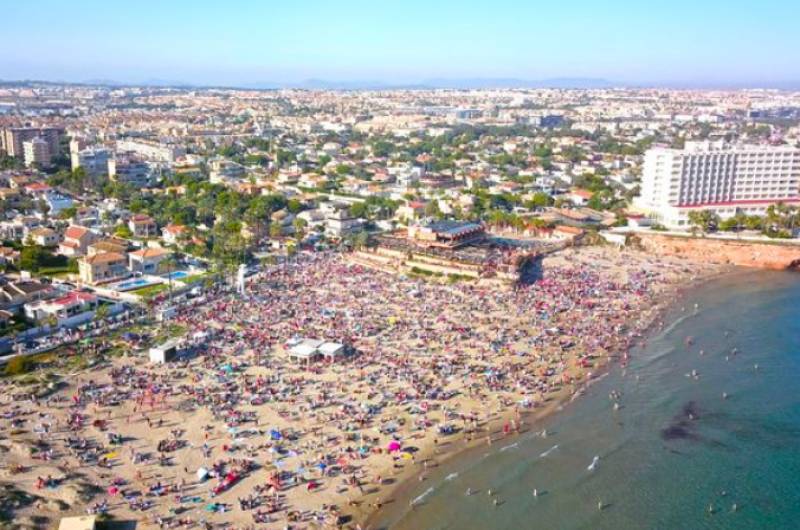

Guidelines for submitting articles to Mar Menor Golf Resort Today
Hello, and thank you for choosing Mar Menor Golf ResortToday.com to publicise your organisation’s info or event.
Mar Menor Golf Resort Today is a website set up by Murcia Today specifically for residents of the urbanisation in Southwest Murcia, providing news and information on what’s happening in the local area, which is the largest English-speaking expat area in the Region of Murcia.
When submitting text to be included on Mar Menor Golf Resort Today, please abide by the following guidelines so we can upload your article as swiftly as possible:
Send an email to editor@spaintodayonline.com or contact@murciatoday.com
Attach the information in a Word Document or Google Doc
Include all relevant points, including:
Who is the organisation running the event?
Where is it happening?
When?
How much does it cost?
Is it necessary to book beforehand, or can people just show up on the day?
…but try not to exceed 300 words
Also attach a photo to illustrate your article, no more than 100kb

Torrevieja Floating Museums
Museos Flotantes, Submarine S-61, Delfin and Patrullero Albatros
 The floating museums are in theory an extension of the Museo del Mar y de la Sal in the town centre, and consist of a ship, a boat and a submarine which are no longer in service and are open for visitors to explore.
The floating museums are in theory an extension of the Museo del Mar y de la Sal in the town centre, and consist of a ship, a boat and a submarine which are no longer in service and are open for visitors to explore.
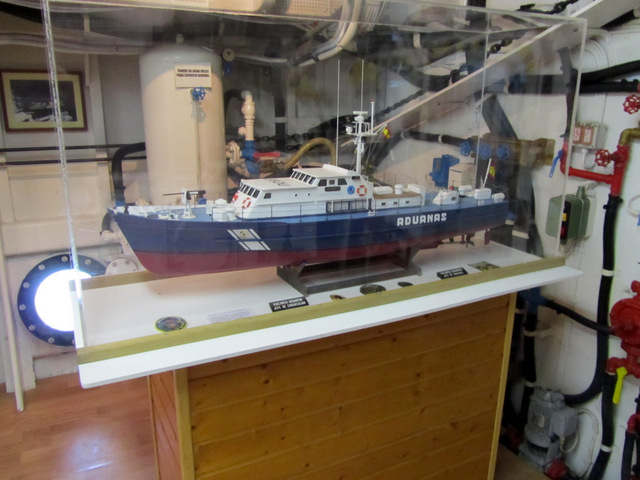 The first of these is the Albatros III patrol boat which was formerly used by the Guardia Civil for over 30 years as part of their coastguard and customs operations. It has been on display in the port of Torrevieja since 2006, and is presented as a tribute to the men who patrol the seas off the coast of Spain.
The first of these is the Albatros III patrol boat which was formerly used by the Guardia Civil for over 30 years as part of their coastguard and customs operations. It has been on display in the port of Torrevieja since 2006, and is presented as a tribute to the men who patrol the seas off the coast of Spain.
Moored next to the Albatros III is the S-61 Delfín submarine, which was donated to the Town Hall of Torrevieja when it was taken out of service and opened as a museum in 2004. The sub received its flag of combat in the port in 1974, and in some ways is therefore back home!
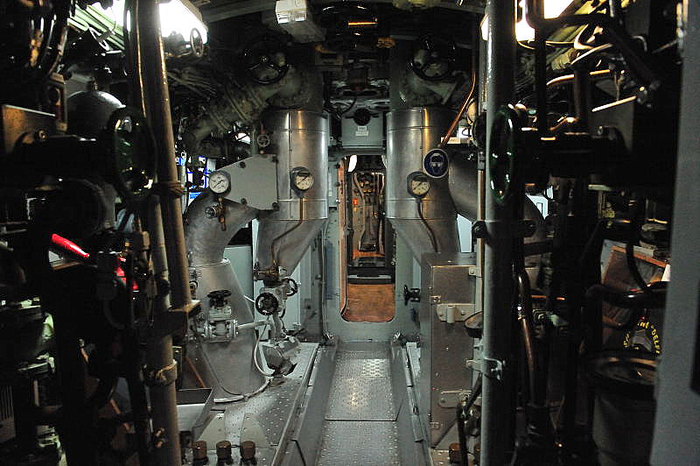 The submarine measures 57.8 metres in length, and the maximum width is 6.8 metres, much of which is accounted for by the need to provide stability and the large torpedo bays. When fully operational the Daphne class (to which the Delfín belongs) could remain submerged for almost 30 days, and could travel 4,500 nautical miles without refueling at a top speed of 15.5 knots.
The submarine measures 57.8 metres in length, and the maximum width is 6.8 metres, much of which is accounted for by the need to provide stability and the large torpedo bays. When fully operational the Daphne class (to which the Delfín belongs) could remain submerged for almost 30 days, and could travel 4,500 nautical miles without refueling at a top speed of 15.5 knots.
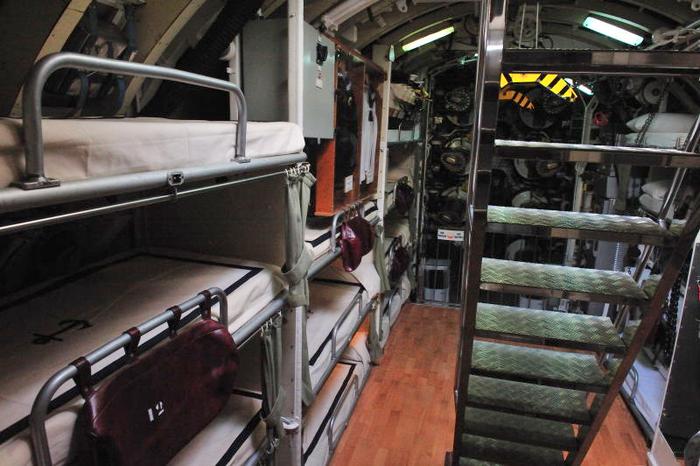 What will most impress anyone who is visiting a submarine for the first time is the claustrophobic atmosphere. The official crew for these vessels consisted of 56 people, and the bunk sizes, bathroom facilities and living and working areas are compact to say the least. Those who have never been on board a sub will wonder how this quantity of men survived with their sanity intact, and how the sub must have smelt after a month below the waves with a full crew. There was a maximum height limit of 1 metre 70 for submariners on the S-60 class in the Spanish navy, and anyone measuring anywhere near 6 foot (1m83) will readily appreciate why even during a short visit to the Delfín!
What will most impress anyone who is visiting a submarine for the first time is the claustrophobic atmosphere. The official crew for these vessels consisted of 56 people, and the bunk sizes, bathroom facilities and living and working areas are compact to say the least. Those who have never been on board a sub will wonder how this quantity of men survived with their sanity intact, and how the sub must have smelt after a month below the waves with a full crew. There was a maximum height limit of 1 metre 70 for submariners on the S-60 class in the Spanish navy, and anyone measuring anywhere near 6 foot (1m83) will readily appreciate why even during a short visit to the Delfín!
(Note: due to the difficulty of climbing up and down the ladders there is also a minimum height for visitors of 1.15 metres).
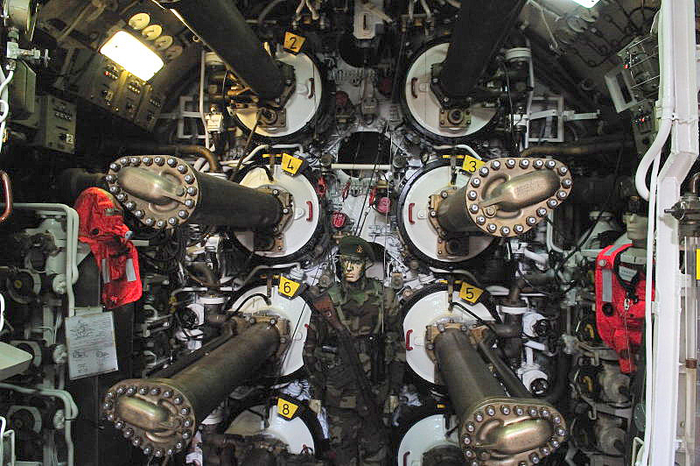 The telecommunications and other equipment on board is an interesting reminder of how much progress has been made in the 40 years since the Delfín first sailed: a mass of wires and cables lines the interior of the sub, looking distinctly 20th century from a 21st-century point of view. The successor of the S-60 class, the S-70, is still in service, although is on the verge of being finally replaced by the S-80, the prototype for which is currently under construction at the Navantia dockyards in Cartagena, across the border in Murcia.
The telecommunications and other equipment on board is an interesting reminder of how much progress has been made in the 40 years since the Delfín first sailed: a mass of wires and cables lines the interior of the sub, looking distinctly 20th century from a 21st-century point of view. The successor of the S-60 class, the S-70, is still in service, although is on the verge of being finally replaced by the S-80, the prototype for which is currently under construction at the Navantia dockyards in Cartagena, across the border in Murcia.
 The third of the three craft which in theory comprise the floating museums is a replica of the Pascual Flores sailing ship, but this is currently undergoing restoration and repair work and is therefore not open to visitors. There is also a model of this vessel in the Museo del Mar y La Sal, as this is typical of the vessels once built in Torrevieja and which crossed the Atlantic to South America, taking cargoes of salt and returning with hardwoods and other trade goods. ( see History of Torrevieja).
The third of the three craft which in theory comprise the floating museums is a replica of the Pascual Flores sailing ship, but this is currently undergoing restoration and repair work and is therefore not open to visitors. There is also a model of this vessel in the Museo del Mar y La Sal, as this is typical of the vessels once built in Torrevieja and which crossed the Atlantic to South America, taking cargoes of salt and returning with hardwoods and other trade goods. ( see History of Torrevieja).
On the jetty alongside the ships are a number of other items which will be of interest to anyone who knows a little about naval and military history: these include mines, torpedoes, machine-guns, anti-aircraft guns, anchors and various smaller boats, including one which was formerly in use by the Policía Local.
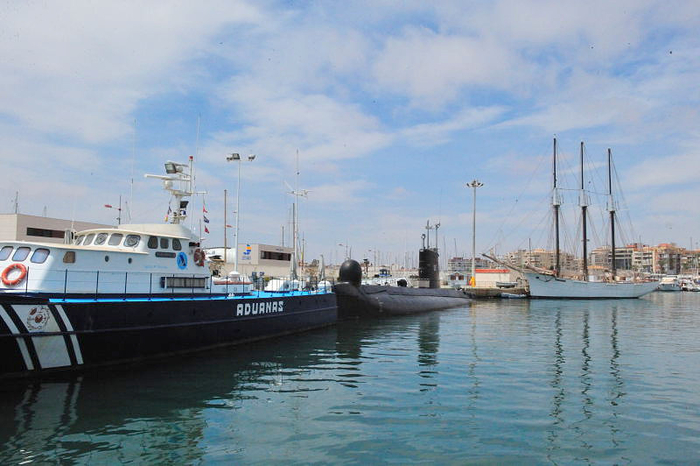 Opening Times:
Opening Times:
There is an entrance fee of 2€ to visit the floating museums, which are closed to the public on Mondays and Tuesdays and also on rainy days.
Normal opening hours:
Wednesday to Sunday 10am to 2pm
Closed on festival days: ( 2014 dates – 19th March, 1st May, 15th August, 9th and 12th October, 1st November, 6th and7th December, from 24th December to 1st January.
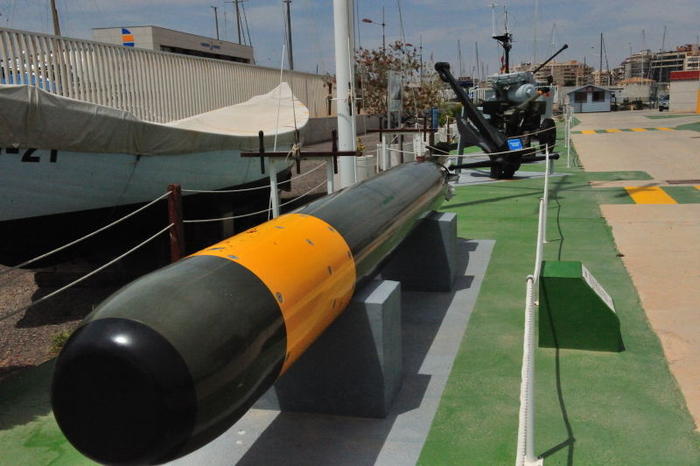 It’s easy to combine a visit to this museum with a good walk out along the dyke behind it. The Museo del Mar y la Sal is a 10 minute walk from this museum, in the centre of the town.
It’s easy to combine a visit to this museum with a good walk out along the dyke behind it. The Museo del Mar y la Sal is a 10 minute walk from this museum, in the centre of the town.
There is also plenty of parking close by, the cheapest being in the marina behind the fishing port and museum, which is just one euro for a whole day. (Summer 2014 price)
Address: Avenida del Puerto, Torrevieja
Click for map and to see the parking , Avenida del Puerto Torrevieja









